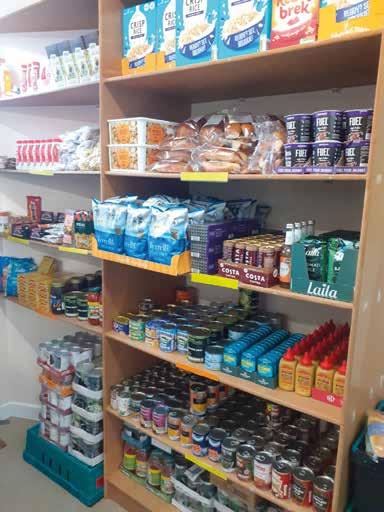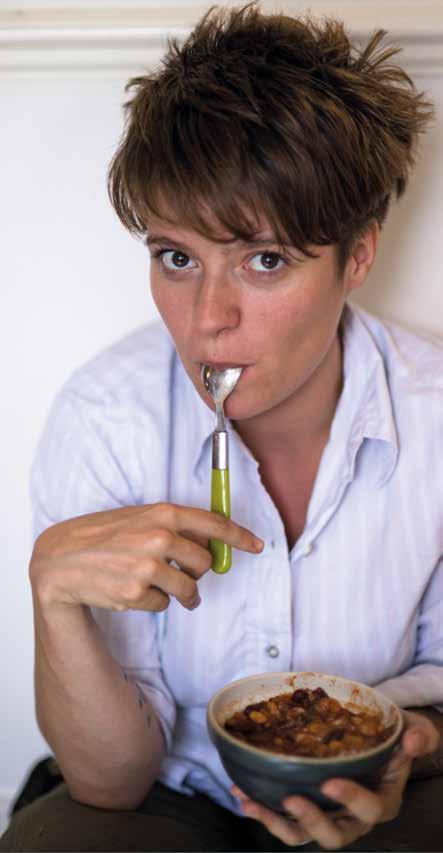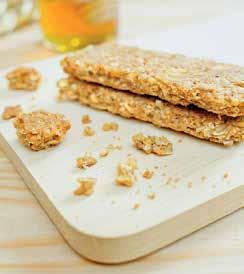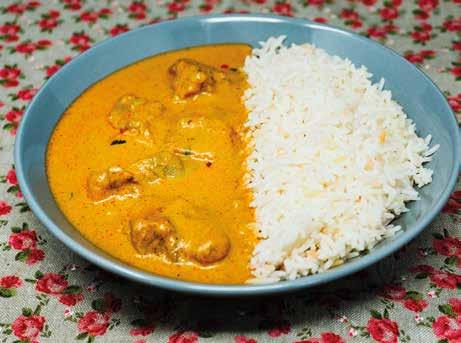
4 minute read
Cook in bulk
by Quids in!
ECONOMIES OF SCALE
Cooking in bulk saves us time and money, and it means there’s always something decent to put on the table…
Advertisement
Someone who has made a career out of cooking now and saving for later is Suzanne Mullholland, also known as ‘The Batch Lady’. It’s fair to say Suzanne has turned cooking in bulk into an art form. With a huge internet fan base and a cookbook to boot, she’s riding the crest of the bulk cooking wave.
Suzanne can cook forty meals in an hour, and can make ten different meals from a handful of ingredients, using just a spoon! The cover of her book has a simple message: ‘Shop Once. Cook Once. Eat Well All Week.’
We don’t all need to take it as far as Suzanne, but her success shows how popular cooking in bulk is. And if we follow her message, we’ll be quids in and time rich. So what are the steps to taking back control of our time in the kitchen and the money in our pocket?
PLAN OUR SHOP Cooking in bulk begins with planning meals. We’ve published an article on how it is possible to do an entire weekly food shop for £10 (quidsinmagazine.com/ blog-post/cheap-eats/). It goes to show that planning saves pounds. Using a site like mysupermarket.co.uk is great to work out how much we need to spend.
Things like stews, curries and pasta sauces are cheap and easy to stretch out, and they freeze well too. Home cooked food almost always has less fat and salt used in it, so it’s much better for our health, too.
BUY IN BULK (IF POSSIBLE) Generally, the cost of food goes down as the size and weight goes up. For example, 500 grams of minced beef will cost more per gram than 1,000 grams. So, if you’ve got the storage space and the cash, consider buying bigger at the supermarket. Another knock-on benefit of buying in bulk is it usually means you get less packaging, which is also good for the environment.
SAVE TIME It doesn’t matter if we live on our own or have a big family, cooking in bulk saves so much time. Scaling up a recipe to make ten portions instead of two might take a few more minutes in prep time, but if it takes an hour to make 10 portions, compared to 45 minutes to make two, we’ve saved nearly three hours. Plus, our energy bills will come down as we are using less.
FREEZE AND LABEL Once you’ve done the hard work and cooked a big batch of tasty grub, all you need to do is pop it into freezable containers and label them. Most meals can be frozen for up to six months, so it’s important to write a date so you know how long it’s been in there. When you’re ready to eat it, simply reheat in the microwave or on the stove. Remember to follow reheating guidelines.
TOP TIPS
There are a few things we can bear in mind to really bring down our food costs.
✔ Veg is cheaper than meat, so go veggie for a couple of meals and save some cash ✔ Cooking in batches saves us time and money ✔ Bulk out meals with the cheaper stuff ✔ Dishes based around rice, pasta or couscous go a long way✔ Don’t forget about nutrition – again, veg is cheap, so try and get as much as possible
SUPERMARKET SHOPPING TIPS FOR KEEPING ON TOP OF THE SPEND:
≠ ALWAYS USE A SHOPPING LIST: Supermarkets are designed to make us spend as much money as possible. The store layout, branding and special offers are all carefully considered to make us splash out. By making sure we go in armed with a shopping list and working out exactly what we need before we step inside, we’re more likely to avoid making impulse buys.

≠ PAY IN CASH: Using a credit or debit card makes us more likely to overspend. Allocating a weekly budget and taking the exact amount with us when we go to the supermarket means we can’t go overboard. If we do our shop online, there is a running total to help keep us on track.
≠ SWITCH DOWN WHERE POSSIBLE – AVOID THE BIG BRANDS: Often supermarket own-brands and ‘value’ versions are the same quality as the bigger brands. The only reason they cost less is because they spend less on advertising and packaging. Try out the cheaper brands and judge for yourself.
≠ FOR BEST VALUE ALWAYS GO BY ‘UNIT PRICE’: To really find the cheapest option, look at the ‘unit price’, which is usually written underneath the actual cost of the item. For example, if one 100g jar of jam costs £1, it is more expensive than a 200g jar of jam that costs £1.50.










